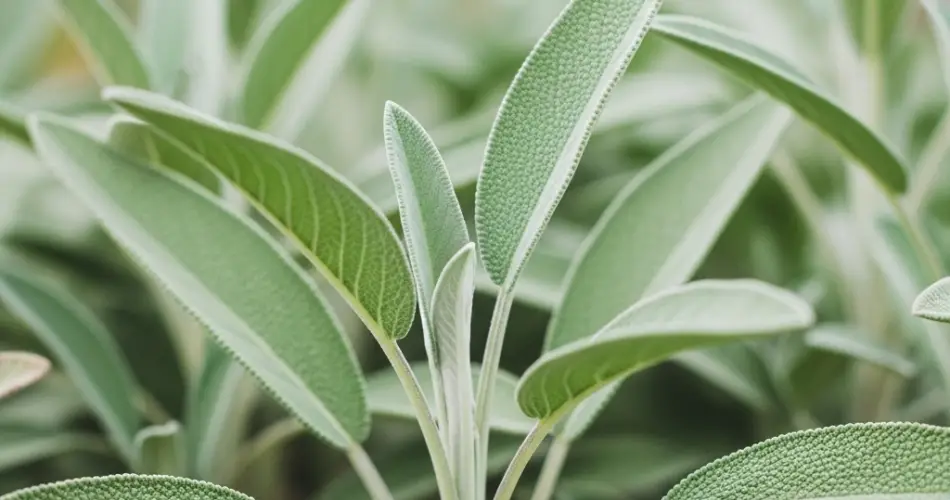Sage (Salvia officinalis) is a hardy, aromatic herb prized for both its medicinal benefits and culinary flavor. Whether you’re using sage to season roasted dishes, brew soothing teas, or create herbal remedies, harvesting it the right way ensures the plant stays healthy and productive over time.
Proper harvesting not only helps maintain the plant’s bushy growth but also guarantees maximum potency and freshness from the leaves. Here’s how to harvest sage for both medicinal and culinary use while keeping your plant thriving.
When to Harvest Sage
Sage can be harvested once the plant has become well established—typically during its second growing season if grown from seed. However, if started from cuttings or purchased as a young plant, you can usually start harvesting lightly within a few months.
The best time of day to harvest sage is in the morning, after the dew has dried but before the sun is too hot. This is when the essential oils in the leaves are at their highest concentration, which is ideal for both flavor and medicinal benefits.
Sage is a perennial herb, and in temperate climates, it grows year-round. For the best flavor and potency, harvest during the spring and early summer before flowering begins. While you can still use sage leaves after it flowers, they may become more bitter and less aromatic.
How to Harvest Sage Leaves
Use a pair of clean, sharp scissors or pruning shears for the best results. Here’s the step-by-step method for harvesting:
-
Choose mature stems – Select stems that are at least 6–8 inches long and have plenty of fully developed leaves. Avoid cutting from young or recently sprouted stems.
-
Cut above a leaf node – Snip the stem just above a leaf pair or node (where leaves branch out). This encourages two new stems to grow, helping the plant become bushier.
-
Never remove more than one-third – Limit your harvest to no more than one-third of the plant at a time. Taking too much can weaken the plant and stunt future growth.
-
Avoid flowering stems for culinary use – If some stems are starting to flower, you can still harvest them, but the flavor may be milder or more bitter. Cut back flowering stems to redirect energy to foliage production.
How to Harvest Sage for Culinary Use
For cooking, fresh sage leaves are best used soon after harvest. The soft, velvety texture and earthy aroma enhance a variety of dishes, especially roasted meats, vegetables, stuffings, and sauces.
You can use fresh leaves whole or chopped. If you’re drying sage for long-term use, harvest a larger batch during the early summer. Tie the stems in small bundles and hang them upside down in a warm, dry, and dark place with good air circulation. Once dry, crumble the leaves and store them in an airtight jar away from light and heat.
Alternatively, you can freeze fresh sage by placing whole leaves in a single layer on a baking sheet. Once frozen, transfer them to a sealed container or bag and store in the freezer.
How to Harvest Sage for Medicinal Use
When using sage for herbal teas, tinctures, infusions, or topical remedies, timing and technique matter. For medicinal purposes, the highest concentration of beneficial oils is found in the leaves before the plant begins to flower.
-
For tea and infusions: Fresh or dried sage leaves can be steeped in hot water to soothe sore throats, aid digestion, and support respiratory health.
-
For tinctures and oil infusions: Harvest sage during peak growth and use the leaves in alcohol- or oil-based extractions to capture its antiseptic and anti-inflammatory properties.
Drying sage for medicinal use follows the same method as for culinary purposes, but ensure the leaves are fully dry to prevent mold during storage.
How Often to Harvest
You can harvest sage throughout the growing season, but frequent harvesting should be done in moderation. Allow the plant to rest and regrow between cuttings, especially after a heavy harvest. In late summer or early fall, consider one final harvest before the plant slows down for winter.
If you live in a colder climate, prune the plant lightly in fall, but avoid cutting it back too hard, as it may need some foliage to survive the winter. In spring, trim away any dead or woody stems to encourage new growth.
Additional Tips for a Healthy Sage Plant
-
Sunlight: Ensure your sage receives full sun—at least 6 hours a day—for optimal leaf production.
-
Soil: Plant in well-draining soil; sage doesn’t tolerate waterlogged roots.
-
Spacing: Give each plant enough space to allow air circulation, reducing the risk of disease.
-
Watering: Sage prefers slightly dry soil. Water deeply but infrequently, letting the top inch of soil dry out between waterings.
Conclusion
Harvesting sage is a simple yet important part of herb care that ensures a steady supply of fragrant leaves for cooking and natural remedies. By following best practices—harvesting at the right time, using proper techniques, and respecting the plant’s growth cycles—you can enjoy healthy, bushy sage plants year-round. Whether you’re steeping a calming tea or seasoning a hearty dish, homegrown sage delivers powerful flavor and healing properties right from your garden.



